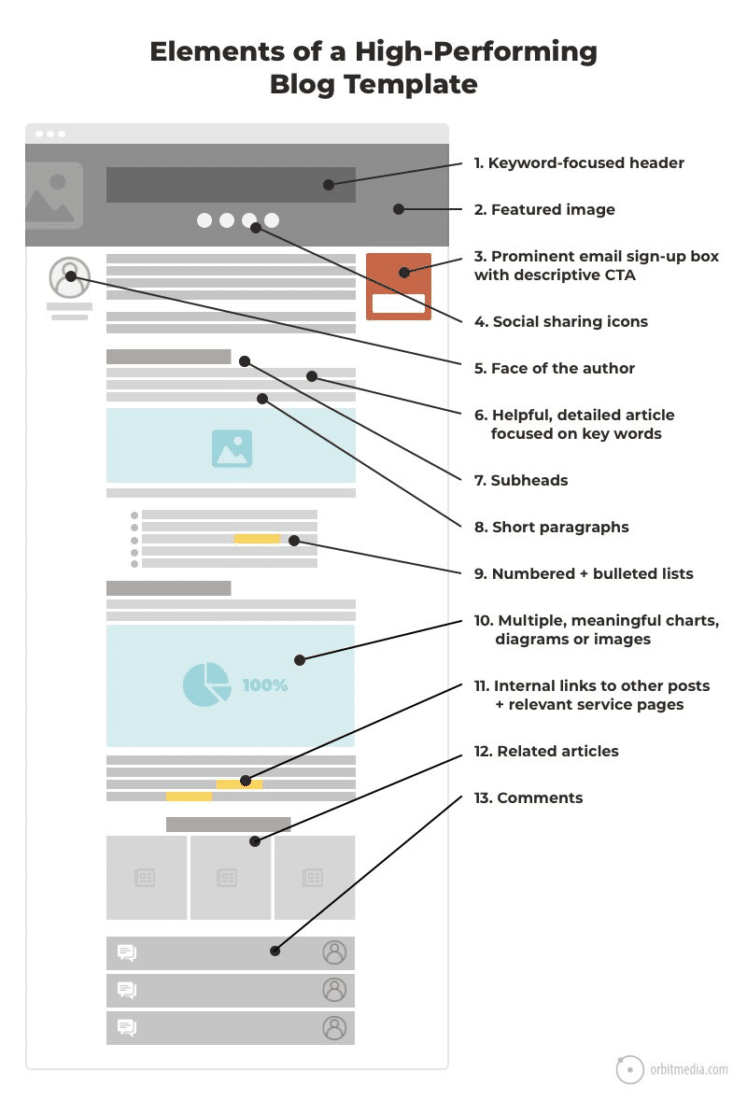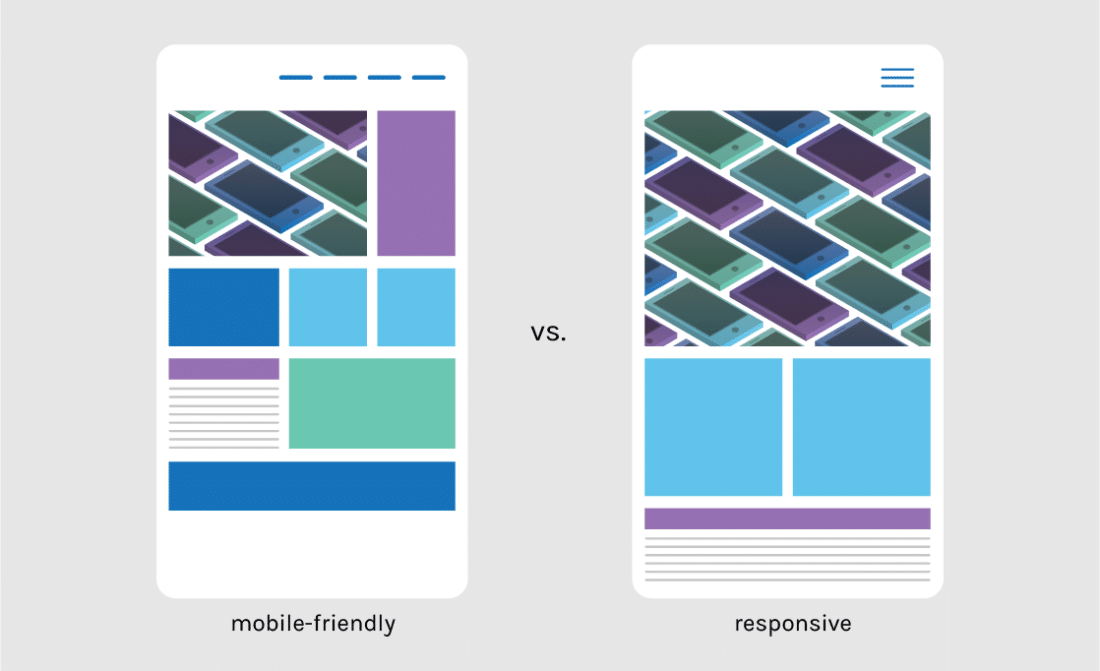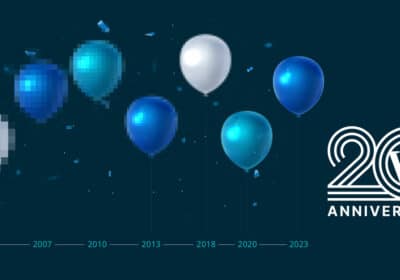Every page on your website needs to have a distinct purpose with the goal of attracting, keeping, and ultimately converting customers. Each page has a set of elements that moves visitors along, flowing toward an action (subscribe, contact, share or purchase, for example). This flow gently guides users through a series of steps—awareness, interest, trust, and finally action; in other words, the conversion funnel. For many visitors, the first place they interact with your website is your blog.

Website visitors are looking for information. It is likely they ended up on your website via a search page referral or from another website/social media referral. Hopefully this is a result of your content marketing strategy doing its work. No matter how they landed on your website, it’s vital to show how phenomenal your brand is while quickly attracting your visitor to stay. It takes about 50 milliseconds (that’s 0.05 seconds) for users to form an opinion about your website that determines whether they like your site or not, and whether they’ll stay or leave.
Designed to Attract
The best way to avoid snap judgements of your website is to improve its design. The first page a visitor lands on your website should capture their attention. In fact, 38% of people will stop engaging with a website if the content or layout is unattractive. While significant time and effort is dedicated to blog content, blog design is the vehicle in which your content will thrive or die.
Website first impressions are 94% design-related. Things like boring design; bad use of color; excessive pop-up advertisements; inadequate introductory content; small print; too much text; a corporate look and feel; and an ineffective search feature will all make your visitors go elsewhere.
It’s in the template
Blogs need to have an effective template that makes it easy for visitors to get the information they want. Well-designed templates allow your content to be easier to find, easier to read, easier to share, easier to sign up, and easier to get more information. There are two templates for every blog: the main page template and the post detail template.
Both the main page and the post need to have the following elements that make your content attractive and move your visitors to the next step in the conversion funnel:
- Keyword-focused header
- Featured image
- Email signup box with a CTA
- Social sharing icons
- Author information
- Content focused on keywords
- Subheads
- Short paragraphs
- Numbered and bulleted lists
- Multiple charts, diagrams or images
- Links to other posts and other internal pages
- Related articles
- Comments

Visitors spend an average of 5.59 seconds looking at a website’s written content. A blog’s content serves primarily to educate visitors. Self-promotional sales messages shouldn’t be found anywhere on a blog page; they belong on service pages that explain what you do.
Blog images, text and links need to be focus on the visitor’s needs. Otherwise, they might abandon your content if it’s not showcased in a way that’s appealing, easy to follow, and generates more interest. If given 15 minutes to consume content, two-thirds of people would rather read something beautifully designed than something plain.
Designed to Delight
To create a beautifully designed blog, it must have a mix of visual elements in its design. Only 20% of content is read, as most people skim. Adding in appealing visual content creates breaks and assists in enhancing the content.
Here are some types of visual content:
- Photos
- Illustrations
- Visual maps
- Screen captures
- Animated GIFS
- Characters
- Infographics
- Pictographs and comics
- Videos
- Slideshows
- Webinars and presentations

Additionally, write short paragraphs of three or four lines, then break it up with a graphic. The longer the paragraph, the more likely it will be skipped.
In his book, Brain Rules, author John Medina asserts that vision trumps all senses. “Our brain sees words as lots of tiny pictures, and we have to identify certain features in the letters to be able to read them,” Medina says. “That takes time.”
While using a number of visuals can make for an interesting blog, ensure your visuals aren’t affecting your site and load time. Almost 40% of people will stop engaging with a website if images won’t load properly or take too long to load. You can check your page speed load times on both desktop and mobile on Google’s Page Speed Insights tool.
Designed for Devices
When you are designing your blog layout, the display on mobile must be a priority. Nearly 8 in 10 customers would stop engaging with content that doesn’t display well on their device. And a poorly designed mobile website won’t be recommended by 57% of internet users. How your website looks on mobile matters.
This is where responsive web design comes into play. Websites that are not mobile responsive are by nature poorly designed because they don’t provide an optimal user experience. All websites should feature responsive web design. In other words, the display of the website should adjust based on the pixel width of the site upon which it’s being viewed. No more pinch and zoom on mobile; that makes for a poor visitor experience.

Designed for Metrics
As you determine how to design your blog for your target audience, a must-use tool to determine how your site is performing is Google Analytics. Every website owner should take advantage of Google Analytics as it provides valuable information on improving your website.
Here are the key metrics to factor into your website design:
- Audience: Who is visiting your website?
- Acquisition: Where are visitors coming from?
- Bounce Rate and average session duration: How long are visitors staying on your website?
- Behavior → User flow: How do visitors interact with your website?
- Behavior → Site content: How are your landing pages performing?
- All Traffic → Source/medium: When do you have the most/least visitors?
- Audience → Mobile → Overview: What devices is your audience using?

Designing an attractive blog that provides visitors with the information they want is the only way your content will shine. Creating a template and design that makes it easy for your audience to answer their questions will draw them in. Images, short paragraphs, and responsive web design will enhance and produce a blog that keeps visitors coming back for the great content—and products—you are providing.
Photo by Christina @ wocintechchat.com





Join the conversation